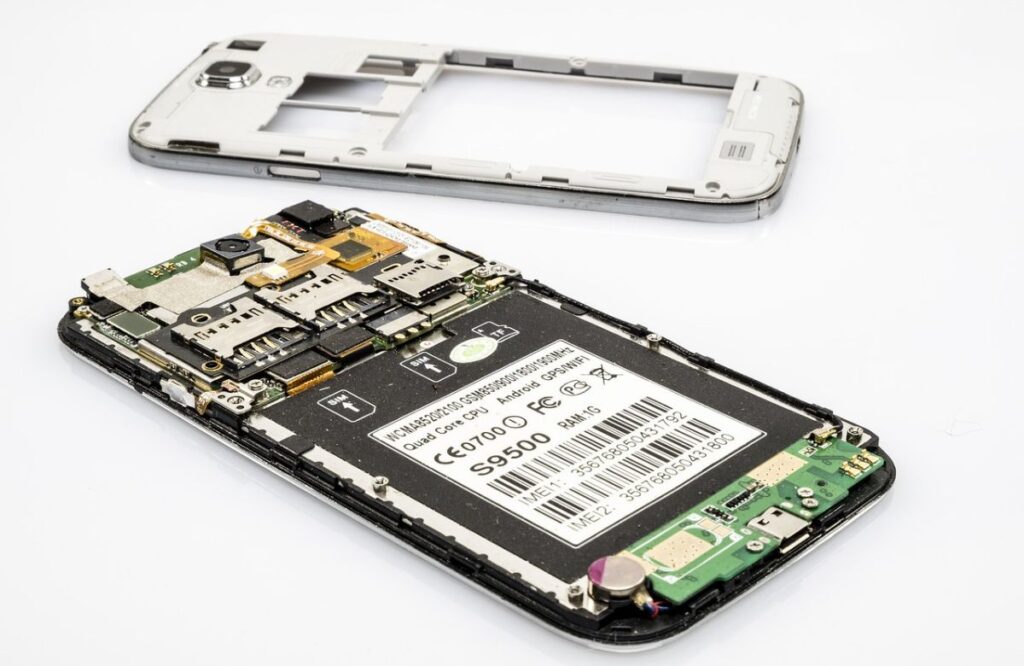
If you are reading this, you probably have broken your cell phone or are experiencing some kind of issue with it, and now you have to leave it at the phone repair shop to get it fixed. But what should you do before handing it to the technicians?
First, back up your data to ensure you don’t lose anything important, especially if the repair involves the motherboard. You can back up photos and files using services like Google Photos, iCloud, or Google Drive. Next, remove the SIM card and any external SD card to keep your contacts and extra storage safe. Store these somewhere secure, as you might need them during the repair period.
Next, turn off any security locks on your phone so technicians can get in if needed. Write down your phone’s IMEI number—a special code that can help you find your phone if there’s any mix-up. For extra safety, log out of all your email and social media accounts on the phone. This will keep your personal info safe.
Finally, if you can, erase everything by doing a factory reset. Just make sure to back up your phone first so you don’t lose anything important.
Steps to Take Before Leaving Your Phone At The Repair Store
These are the steps you may take:
1. Backup Important Data
Taking a backup saves all your data so you don’t lose important photos, contacts, or files.
- For Photos and Videos: Use Google Photos, Amazon Photos, or iCloud. Open the app, select Backup & Sync, and follow the instructions.
- For Documents: Store files in Google Drive or iCloud. Open the app, tap the + button, choose Upload, and select your files.
- Sync Contacts: Go to Settings, find Accounts or iCloud, and turn on Sync Contacts. This will back up contacts to your Google or Apple account.
- Full Backup on Computer: Connect your phone to your computer using a USB cable. Use iTunes (for iPhone) or Google’s Android Backup tool (for Android) and follow the on-screen instructions.
2. Remove the SIM Card(s)
SIM cards store contacts and may link to bank accounts.
- To Remove: Look for the SIM tray on the side of your phone. Use a SIM ejector tool or a small pin to open the tray, then remove the SIM card and store it safely.
3. Remove the SD Card (If Any)
SD cards hold extra data like photos and apps.
- To Remove: Check for the SD card slot, often next to the SIM card tray. Use a pin or ejector tool to open it, and take out the SD card carefully.
4. Disable the Security Lock
Disabling the lock lets the phone repair technician access your phone if needed.
- To Disable: Go to Settings > Security or Lock Screen. Choose None or Swipe to remove the PIN, password, or fingerprint lock.
5. Note Down the IMEI Number
The IMEI is your phone’s unique ID, which is useful for identifying it.
- To Find: Dial *#06# on the keypad, and the IMEI number will appear. You can also find it under Settings > About Phone. Write it down somewhere safe.
6. Log Out of Email and Social Media Accounts
Logging out helps keep your personal data secure.
- To Log Out: Open each app (like Gmail, Facebook, or Instagram), go to Settings, and find the Log Out option. Tap to sign out of each account.
7. Erase Your Phone’s Data
Wiping your data clears everything on your phone for added security.
- To Erase Data: Go to Settings > System (or General for iPhone), find Reset or Factory Reset. Confirm and wait for the process to complete. Make sure to back up your data before this step, as it will delete everything.
By following these steps, your phone will be secure and ready for repair, keeping your data safe.
Is It Safe to Take Your Phone to a Repair Store?
Yes, it is. Just make sure you look for one with skilled technicians who use quality parts. A good shop will keep your data safe, have privacy rules, and may let you keep your passcode private. You can also check reviews and look for a warranty.
To Sum Up
In short, before taking your phone for repair, you must follow these steps to keep your data safe. Start by backing up your files, photos, and contacts to services like Google Photos, iCloud, or a computer. Remove the SIM and SD cards to protect and store personal information safely. Disable security locks to give technicians access if needed, and note down the IMEI number in case of mix-ups. Log out of your accounts and perform a factory reset to erase data after backup. Choosing a trusted phone repair shop with good reviews and warranties also adds peace of mind.